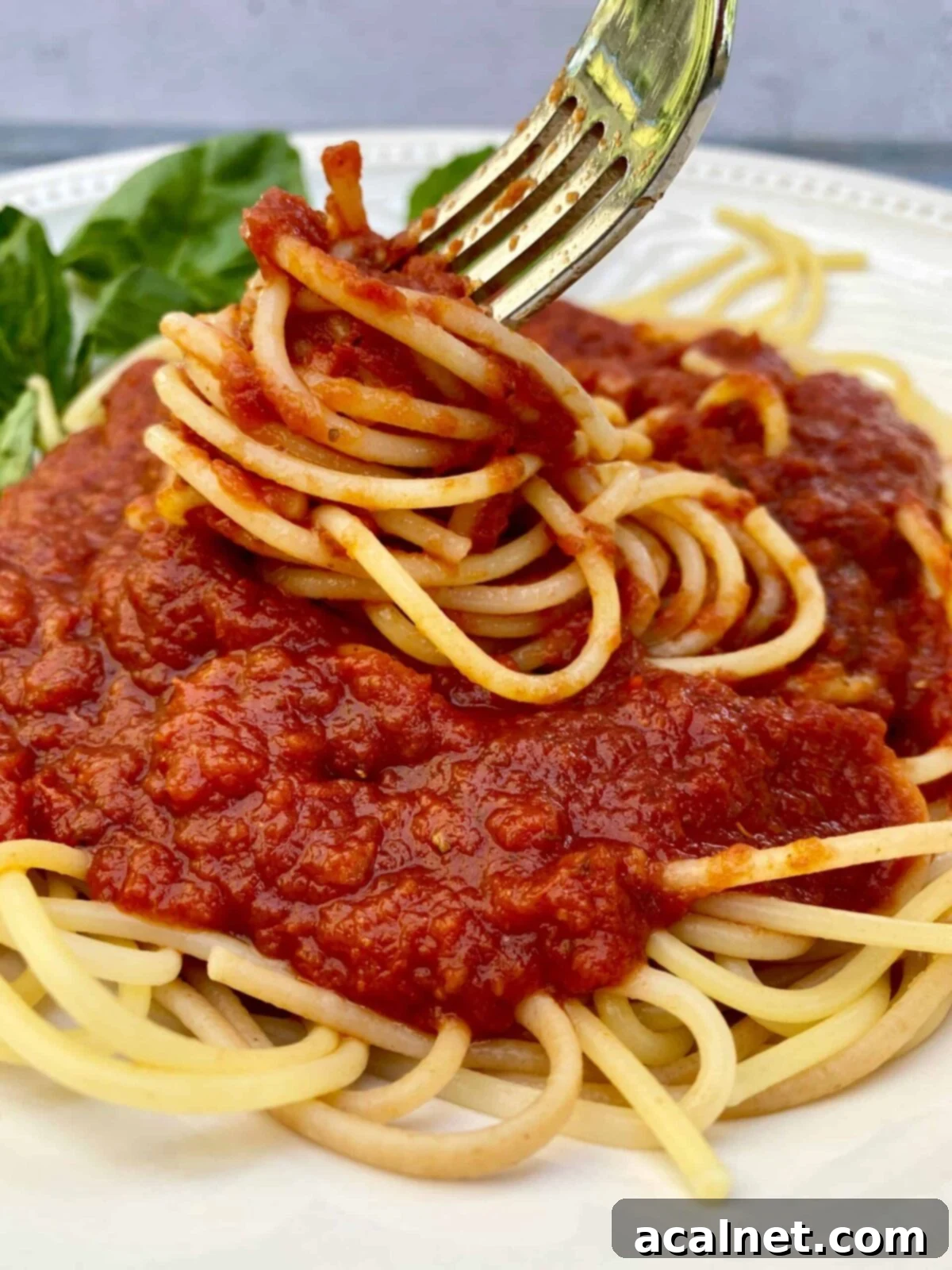Authentic Sunday Gravy: The Best Slow-Cooked Italian-American Spaghetti Sauce Recipe
Forget everything you thought you knew about a rich, homemade spaghetti sauce. Welcome to the world of **Sunday Gravy**, a scratch-made, slow-cooked, tomato-based masterpiece that transcends a simple pasta topping. This isn’t just any sauce; it’s a cherished culinary tradition, a labor of love often prepared on weekends, hence the “Sunday” in its name. The long, gentle simmer allows its deep, complex flavors to fully develop, transforming humble ingredients into an unforgettable experience. Served generously over your favorite pasta, Sunday Gravy promises a taste of authentic Italian-American comfort that will have your family asking for more, making it a staple for gatherings and family dinners.
Note: Some of the links on this page are paid links, Amazon Associates. This means I make a small commission when you click and shop. Your cost is always the same, and I only link to and recommend products or ingredients that I personally use and trust.

Essential Ingredients for Your Homemade Sunday Gravy
Crafting the perfect Sunday Gravy begins with selecting high-quality ingredients. While the cooking process involves patience, the simplicity and depth of flavor come from the excellent foundation you build. Here’s a closer look at what you’ll need to gather to create this authentic Italian-American delight:
- **San Marzano Canned Tomatoes:** Or any high-quality canned crushed tomatoes. San Marzano tomatoes, hailing from Italy, are highly prized for their balanced sweetness, low acidity, and delicate texture. They break down beautifully during simmering, contributing to the gravy’s smooth, rich body. Using crushed tomatoes provides an ideal base, allowing for a perfectly textured sauce without excessive chunkiness.
- **Fresh Basil:** The aromatic signature of Italian cuisine. Fresh basil adds a vibrant, peppery sweetness and an unparalleled aroma that dried basil simply cannot replicate. It’s a key flavor component that brightens the entire gravy and adds a touch of freshness to the long-simmered sauce.
- **Italian Seasoning:** A harmonious blend of dried herbs like oregano, thyme, rosemary, and marjoram, Italian seasoning provides a convenient and consistent way to layer classic Mediterranean flavors into your Sunday Gravy. It complements the fresh basil and garlic beautifully, adding a robust herbal backbone.
- **Garlic:** The foundational aromatic in almost any great Italian sauce. Freshly crushed garlic will infuse your gravy with an irresistible aroma and a savory depth that blossoms as it slowly cooks. Using whole cloves and crushing them just before cooking ensures maximum flavor release.
- **Red Wine (optional):** A splash of dry red wine (such as a Chianti or Merlot) adds a wonderful complexity, acidity, and depth to the gravy. It helps deglaze the pan after browning the meat, capturing all those flavorful browned bits, and its subtle notes enhance the overall richness. If you prefer not to use alcohol, simply substitute it with an equal amount of water or a good quality vegetable or beef broth; the gravy will still be delicious.
- **Meat for Flavoring:** Bone-in cuts like beef shank, pork neck bones, or spare ribs are excellent choices. These meats are not just for eating but are crucial for infusing the sauce with their rich flavors and collagen. As they slowly cook, they release marrow, fat, and connective tissue, which contribute to the gravy’s silky texture and profound umami.
- **Olive Oil, Tomato Paste, Salt, and Pepper:** These essential pantry staples complete your ingredient list. Good quality olive oil provides the base for browning, tomato paste adds concentrated tomato flavor and thickness, while salt and freshly ground black pepper ensure your Sunday Gravy is perfectly seasoned and balanced.
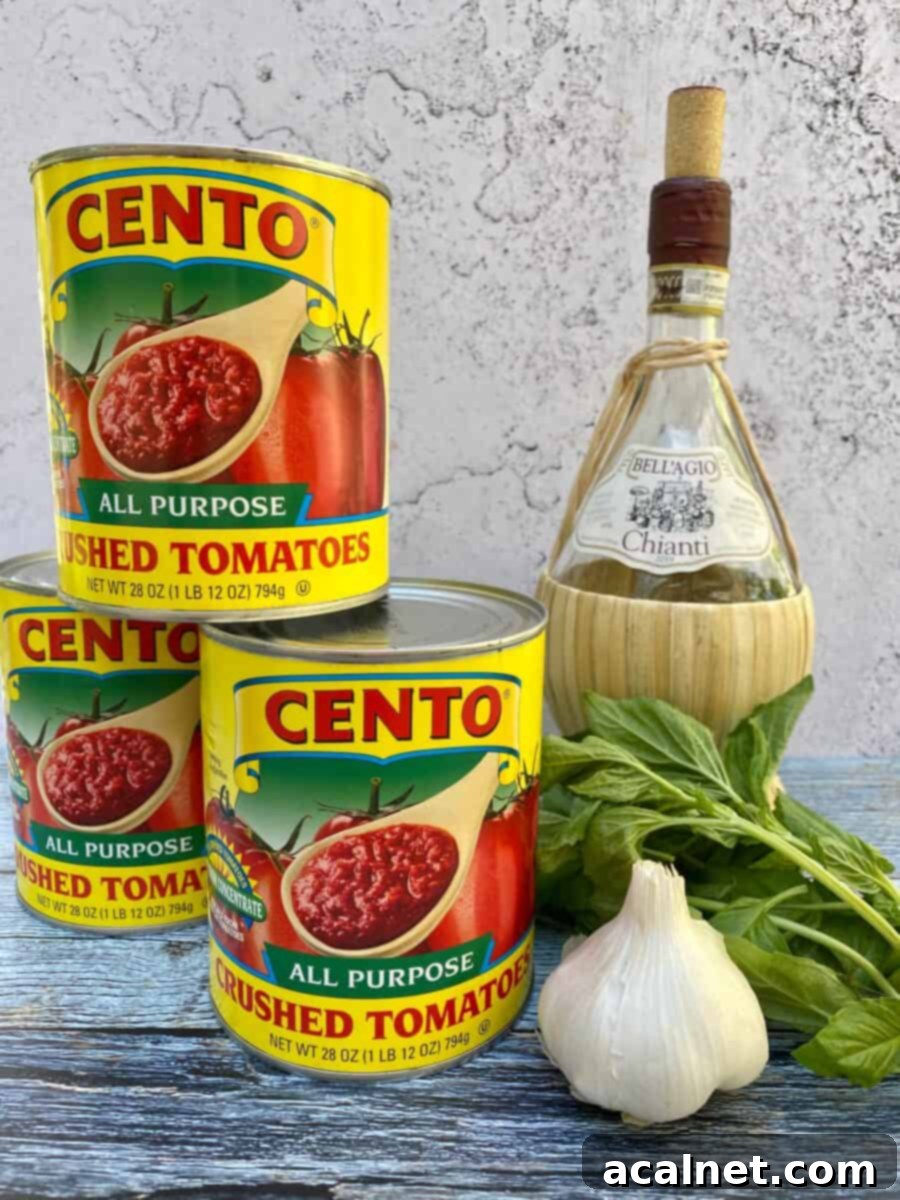
Inspired by The Sopranos: A Nod to Italian-American Culinary Roots
My journey to perfecting this rich, slow-cooked Sunday Gravy recipe has been ongoing for years, but it received a significant nudge from an unexpected source: the iconic HBO series “The Sopranos.” This show, beloved not just for its gripping storyline but also for its authentic portrayal of Italian-American culture, often featured food as a central element of family, tradition, and community life. The series beautifully illustrated how cooking and sharing meals are deeply intertwined with identity and relationships within these communities.
There’s a particularly memorable scene where Tony Soprano, ever the connoisseur of good food, dines at Artie Bucco’s restaurant and, with his characteristic gruffness, proclaims, “The gravy’s good tonight.” This line, simple yet profound, perfectly encapsulated the deep appreciation for a well-made, slow-simmered tomato sauce, affectionately known as “gravy” in many Italian-American households. Even through the television screen, the aroma of that delicious sauce – or rather, gravy – seemed to waft out, igniting my desire to simplify and refine my own recipe to capture that authentic, comforting flavor profile that speaks to generations of culinary heritage.
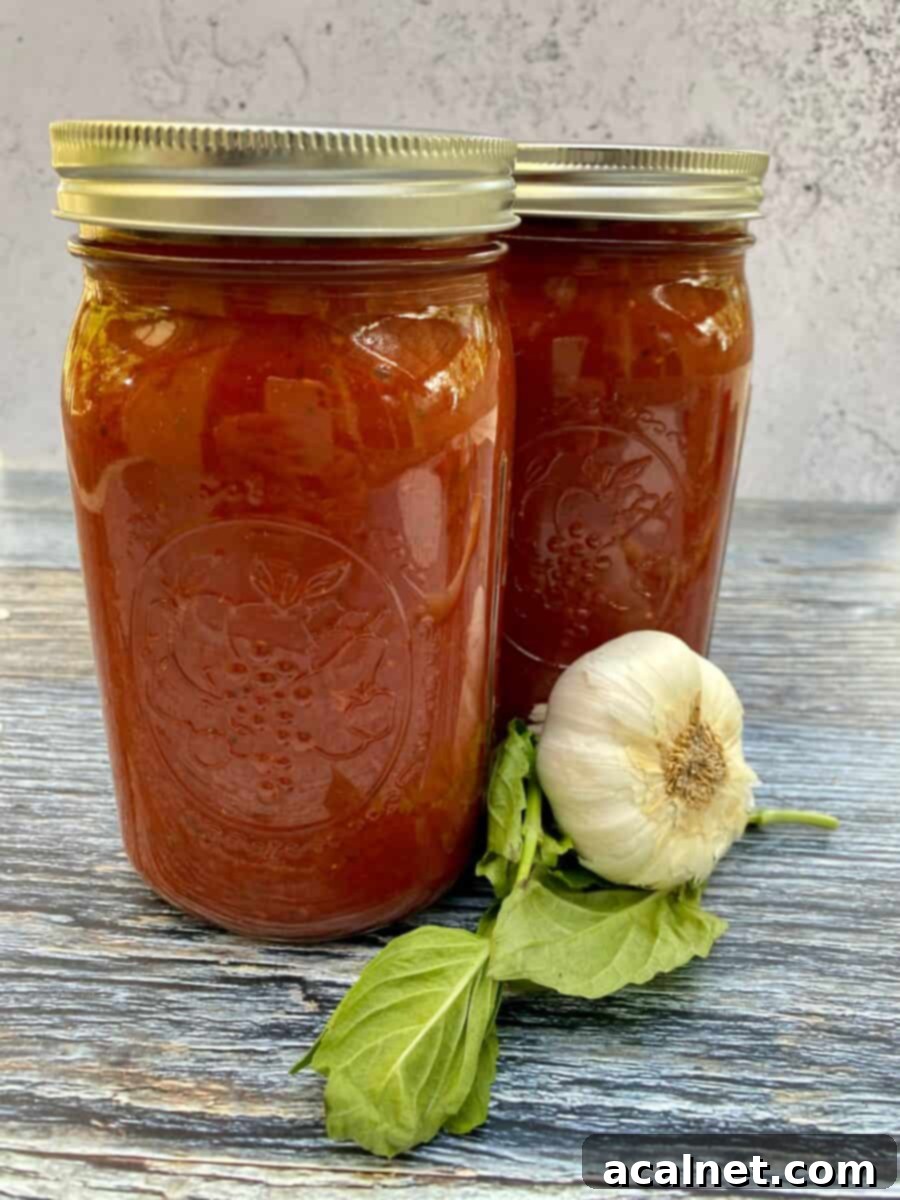
Further culinary inspiration came from The Sopranos Family Cookbook: As Compiled by Artie Bucco. While this recipe is my personal adaptation and interpretation, it draws heavily from the spirit and traditional methods found in that cherished cookbook. It’s a testament to how cultural narratives and culinary heritage intertwine to create dishes that resonate deeply, bringing a piece of that rich history right into your kitchen.
Note: The Crinkled Cookbook is in no way affiliated with the Sopranos TV series, HBO series, movie, or cookbook. This recipe was simply adapted from, and inspired by, the food and recipes found in those places, sharing a love for classic Italian-American cuisine and its enduring traditions.
The Art of Choosing Your Meat for Sunday Gravy: Flavorful Options
One of the most defining characteristics of a truly authentic Sunday Gravy is the addition of meat. In this context, the meat isn’t necessarily the primary protein of the meal but serves a crucial role: to infuse the sauce with incredible depth, richness, and savory complexity. This aspect of the recipe is wonderfully customizable, as every family has their cherished traditions and preferred cuts, making it a truly personal endeavor.
I personally favor simmering the sauce with a bone-in beef shank. It’s an economical cut that’s readily available and imparts a fantastic, savory foundation to the gravy. The bone marrow and connective tissues slowly break down over the long cooking time, releasing collagen that contributes significantly to the sauce’s luxurious body, velvety texture, and profound umami. This gives the gravy a mouthfeel that’s simply irresistible.
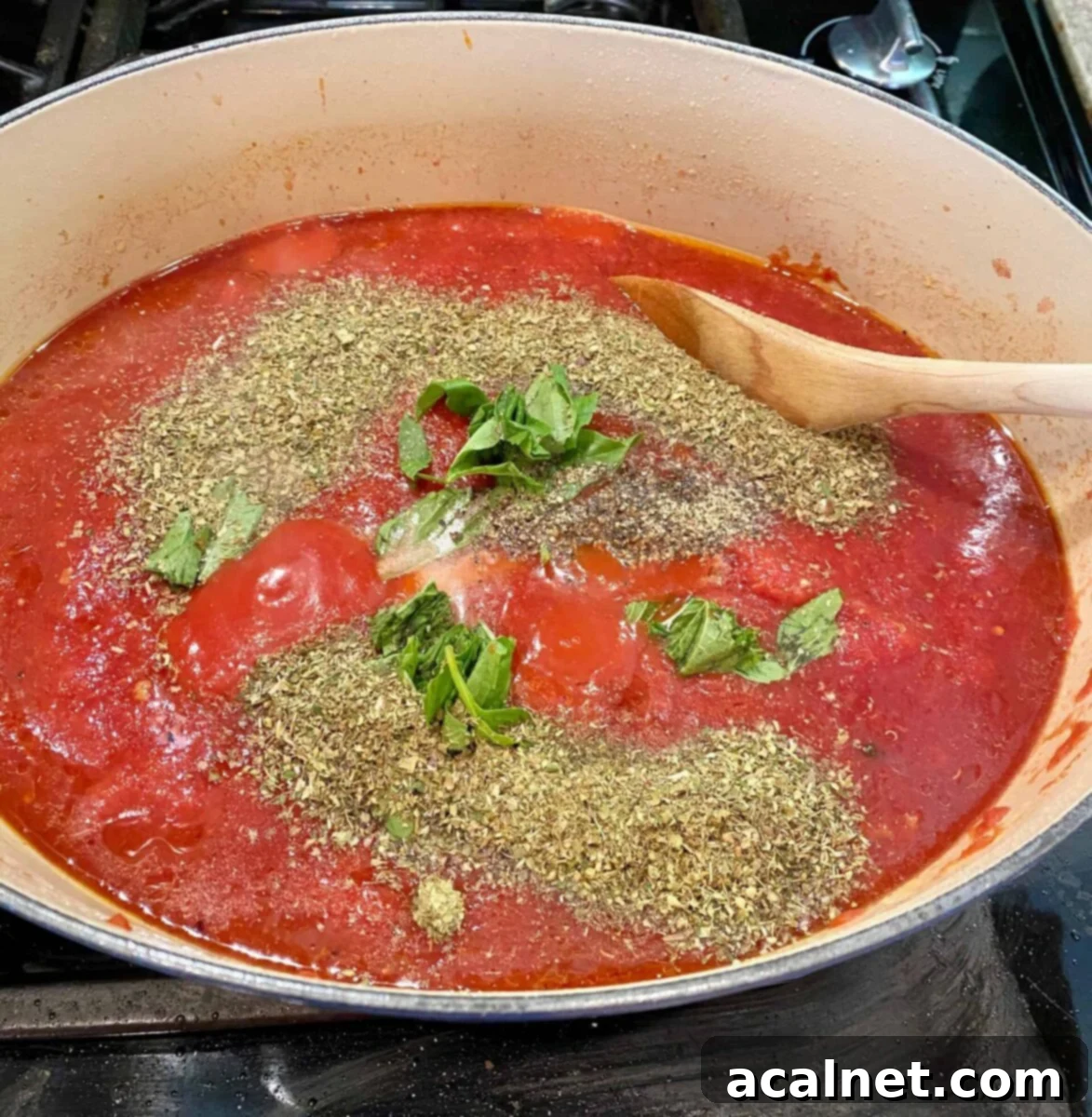
However, the options are truly countless, allowing you to tailor the flavor profile to your precise preference. Many culinary enthusiasts swear by the unique, slightly sweet, and deep flavor imparted by pork neck bones. Others opt for spare ribs, which can lend a subtle smoky, robust character to the sauce. Veal, for a more delicate yet rich taste, is also a popular choice. Italian sausage, whether sweet, mild, or hot, is another classic addition, bringing its own blend of spices and rich fat to the party. Some traditionalists even combine several types of meat (like pork, beef, and sausage) for an unparalleled complexity and a truly multi-layered flavor profile that evolves with every bite.
Don’t be afraid to experiment! I’ve even used a forgotten pork chop or two from the back of the freezer to great success, proving that resourcefulness often leads to delicious outcomes. The key here is to understand that the meat’s primary role is to flavor the sauce during the long simmering process. After it has done its job, you’ll typically remove the bones and any remaining large chunks of meat from the gravy, as their purpose has been served. However, feel free to shred any tender cooked meat and serve it on the side as a delicious accompaniment to your pasta, ensuring nothing goes to waste and adding another dimension to your meal. Browning the meat thoroughly before adding it to the sauce is a crucial first step, as this develops a deep, caramelized crust and fond at the bottom of the pot, which adds an incredible layer of complex flavor once deglazed into your Sunday Gravy.
The Philosophy of Slow Cooking: Embracing the “Sunday” in Sunday Gravy
Making Sunday Gravy isn’t just about following a recipe; it’s about embracing a culinary philosophy that values patience, tradition, and the transformative power of time. This is not a fast-food solution; it’s a slow-food celebration. The “Sunday” in its name isn’t merely a suggestion but a testament to the dedication and unhurried pace required for its preparation – a leisurely process best undertaken on a weekend when you can truly relax and enjoy the journey, letting the magic unfold naturally.
Resist the urge to rush. The true depth, richness, and magic of this homemade spaghetti sauce unfold during its extended simmering time. As the gravy gently bubbles on the stove for several hours, the individual flavors of the tomatoes, garlic, fresh basil, and the various meats slowly meld, deepen, and concentrate, creating a harmonious and incredibly complex profile that simply cannot be achieved through quick cooking. This slow infusion allows the ingredients to break down and release their full essence, resulting in a velvety, smooth texture and an unforgettable taste that coats every strand of pasta beautifully. The longer it simmers, the more profound and satisfying the final result will be, filling your home with an aroma that instantly signals comfort, warmth, and culinary tradition.
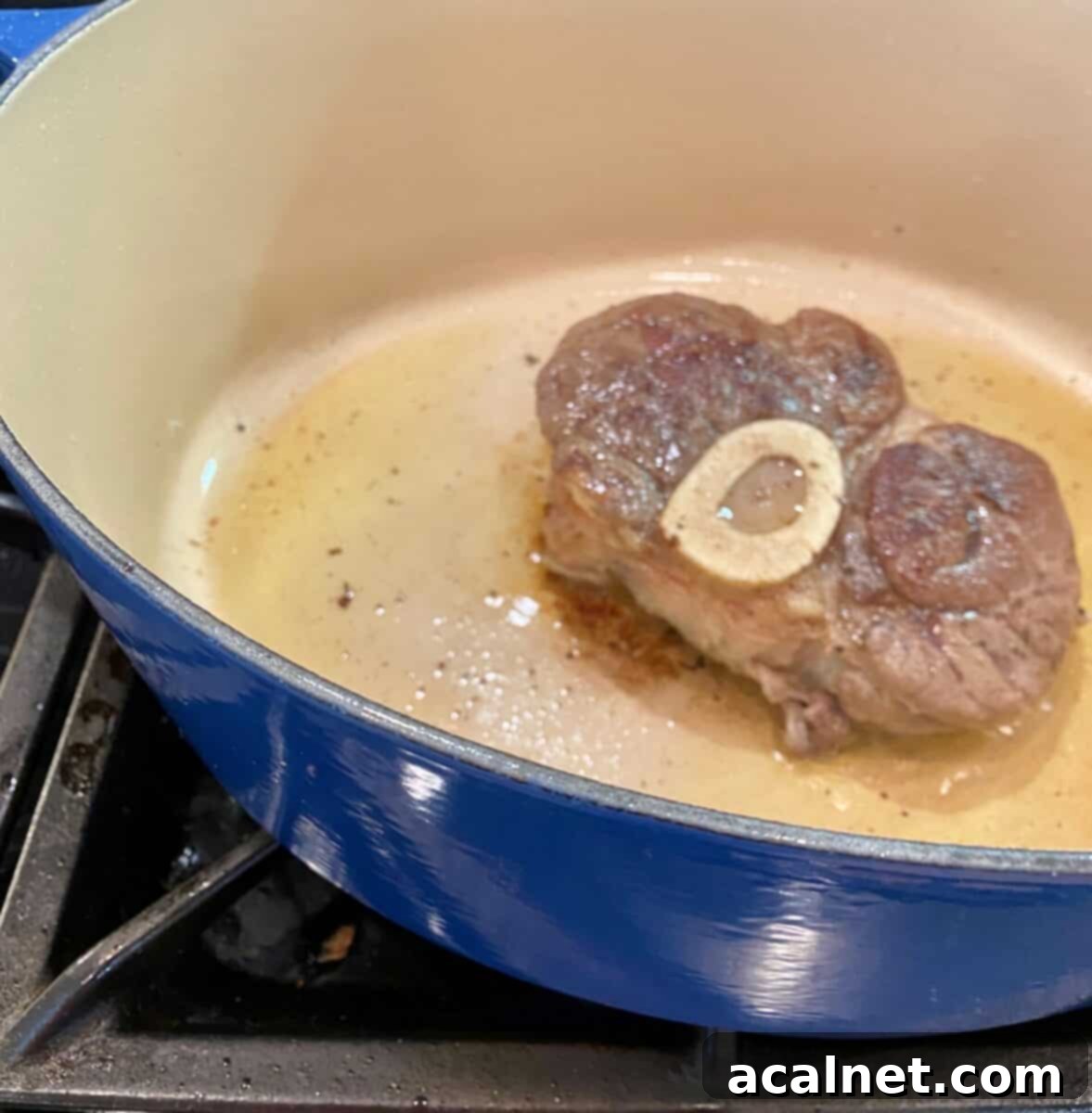
Storing and Enjoying Your Delicious Sunday Gravy Leftovers
One of the many wonderful aspects of this Sunday Gravy recipe is that it yields a generous batch, making it perfect for meal prepping or ensuring you always have delicious, homemade sauce on hand whenever cravings strike. This means less cooking during busy weeknights and more time enjoying exquisite, comforting flavors without the fuss of starting from scratch.
For immediate use, your freshly made Sunday Gravy will stay wonderfully fresh in your refrigerator for about 3-4 days when stored in an airtight container. Its versatility shines here; use it for a classic spaghetti dinner one night, then effortlessly transform it into the luscious base for a layered lasagna, a hearty chicken or eggplant parmesan, or even a robust meatball sub on another occasion. The flavors only deepen and improve with time, making leftovers incredibly desirable.
For longer storage, freezing is an excellent option and highly recommended. I always portion any cooled leftovers into quart-sized, freezer-safe containers or heavy-duty freezer bags. This allows for convenient defrosting of just the right amount whenever you need it, preventing waste and making future meal planning a breeze. Simply thaw your frozen gravy in the refrigerator overnight or gently reheat it on the stovetop from frozen over low heat, adding a splash of water or broth if needed to adjust the consistency. You’ll be amazed at how well the rich, complex flavors are preserved, making future meals effortlessly delicious and satisfying.
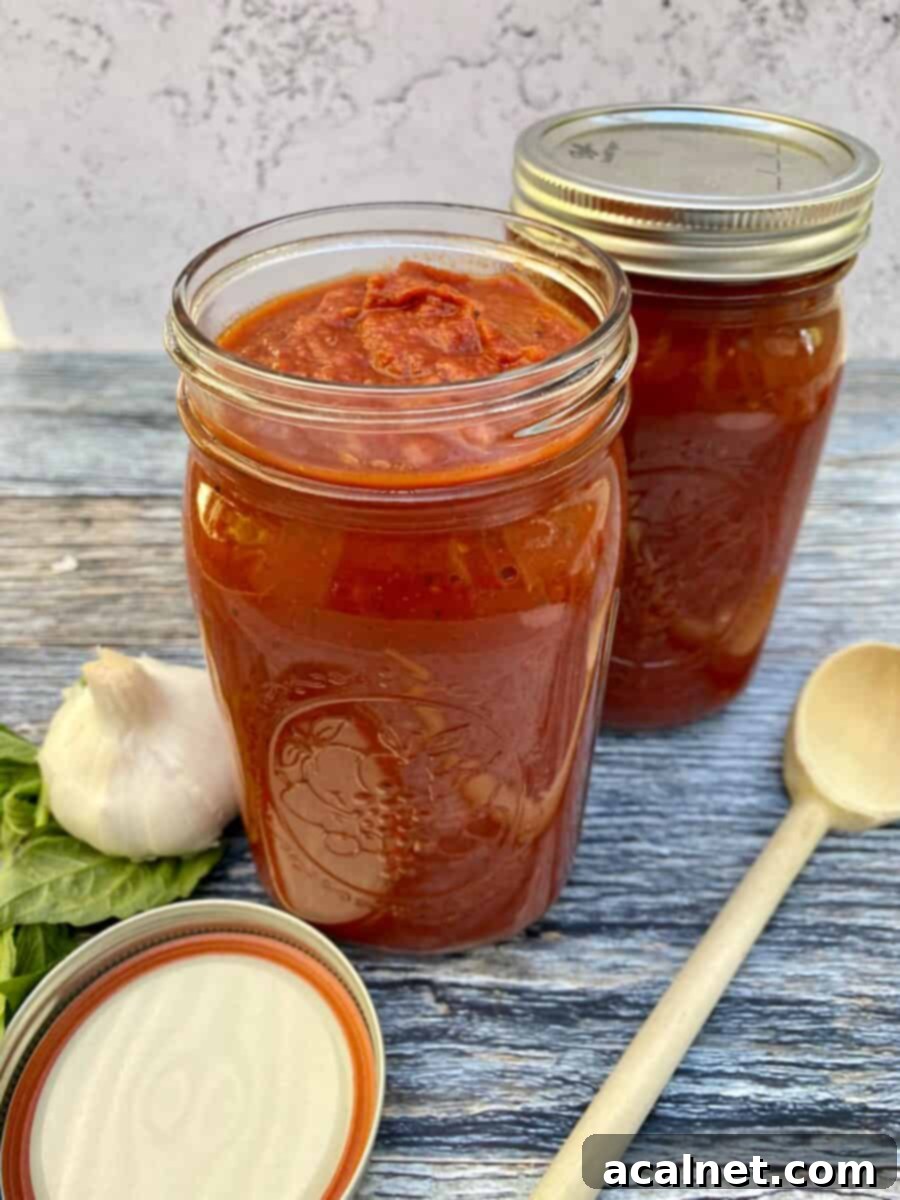
Top Tips and Frequently Asked Questions for Sunday Gravy
While a dry red wine (like a Pinot Noir or a light Chianti) contributes a beautiful richness, subtle complexity, and helps deglaze the pan effectively, it’s absolutely not essential for achieving a delicious Sunday Gravy. If you prefer not to use alcohol for any reason, a simple swap with an equal amount of plain water works perfectly. For an added layer of savory depth, you could also use an equal amount of good quality vegetable or beef broth. The recipe calls for a mere ¼ cup, so even without the wine, your Sunday Gravy will still be wonderfully flavorful and deeply satisfying.
In a real pinch, and if no fresh alternatives are available, you probably could, but I strongly advise against it if you desire the authentic, vibrant taste of traditional Sunday Gravy. There’s truly no comparison to the bright, pungent aroma and distinct, herbaceous flavor that freshly crushed garlic and torn fresh basil infuse into the sauce. Dried herbs and powders have a more concentrated, sometimes muted, and less nuanced flavor profile. While I do incorporate dried Italian seasoning into this recipe (because I love the blend of those classic, earthy flavors), for garlic and basil, freshness is paramount to achieving that vibrant, aromatic depth that makes this gravy truly special and stand out.
This is a fantastic question that delves deep into culinary tradition and regional nomenclature! On the surface, it clearly appears to be a tomato-based spaghetti sauce, and it certainly functions as one. However, the term “gravy” (or sometimes “sauce” and “gravy” used interchangeably) for a rich, slow-cooked, meat-infused tomato sauce has deep historical roots within many Italian-American communities, particularly prevalent in the Northeastern U.S. It often signifies a substantial, hearty sauce that has been simmered for hours with various meats (like beef, pork, or sausage), extracting their essence, fat, and collagen to create a truly robust, thick, and flavorful concoction that goes beyond a simple, lighter marinara or tomato sauce. For my family and me, it’s a playful yet respectful nod to this treasured heritage, emphasizing the scratch-made, slow-cooked process and the incredible depth the meat brings to this beloved dish, distinguishing it from simpler preparations.
While using fresh, ripe tomatoes from your garden might sound appealing for their natural flavor, for Sunday Gravy, good quality canned, crushed tomatoes (especially San Marzano variety) generally provide the very best and most consistent results in terms of both texture and concentrated flavor. Canned tomatoes are picked and processed at their peak ripeness, ensuring consistent sweetness, acidity, and color year-round, which is crucial for a slow-cooked sauce that relies on a robust tomato base. Fresh tomatoes, on the other hand, can vary greatly in water content, sweetness, and acidity depending on the season, variety, and ripeness, which can lead to a thinner, less consistent sauce. They also require significantly more cooking time to break down sufficiently and achieve the desired smooth yet substantial texture characteristic of this slow-cooked gravy.
For a slow-cooked, long-simmered sauce like Sunday Gravy, a heavy-bottomed pot, such as a large Dutch oven (enameled cast iron is excellent) or a sturdy stockpot, is absolutely ideal. The thick bottom of these pots helps to distribute heat evenly and consistently across the base, which is crucial during several hours of simmering to prevent the sauce from scorching or sticking to the bottom. Cast iron or enameled cast iron Dutch ovens are particularly excellent for their superior heat retention and their ability to transition seamlessly from stovetop browning of the meat to the long, slow simmering process with ease, ensuring a consistently delicious result.
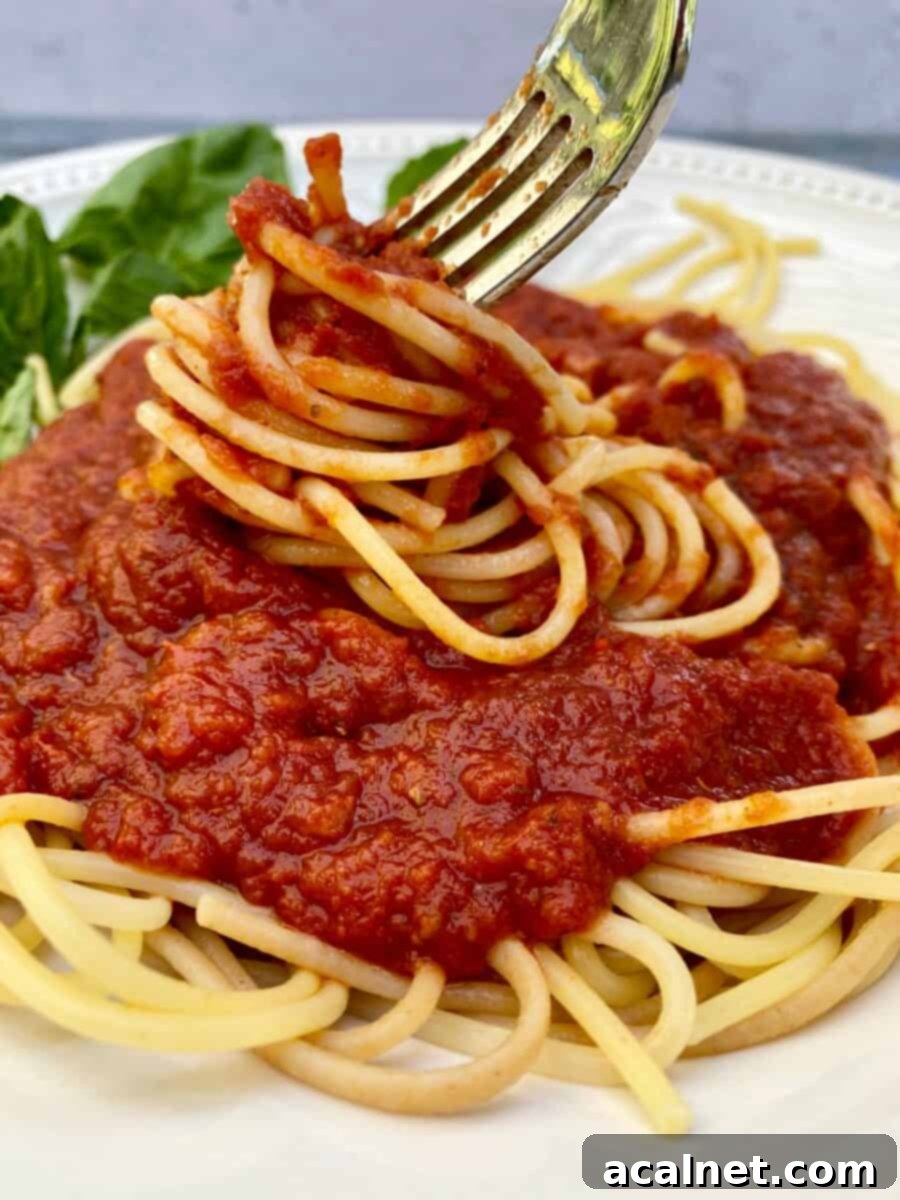
A Delicious Vegetarian Option for Sunday Gravy
While traditional Sunday Gravy is celebrated for its rich, meat-infused depth, this recipe is incredibly adaptable for the vegetarians or those simply looking for a meatless alternative in your family. You can easily achieve a profoundly rich and flavorful tomato sauce by simply omitting the meat altogether. The slow cooking process, combined with high-quality San Marzano tomatoes, fresh garlic, Italian seasoning, and fresh basil, will still yield a profoundly delicious and satisfying result, full of complex tomato flavor.
To further enhance the umami and depth in your vegetarian Sunday Gravy, a fantastic and traditional tip is to simmer the sauce with a rind or two of Parmesan cheese. As the hard cheese rind slowly melts and breaks down over the hours of simmering, it releases a wonderful salty, savory, and slightly nutty flavor that deeply enriches the sauce without adding any meat. Just remember to remove the softened rind before serving. This technique is not only excellent for boosting the flavor of sauces but also works wonders in soups and stews, proving that big flavors don’t always require meat.
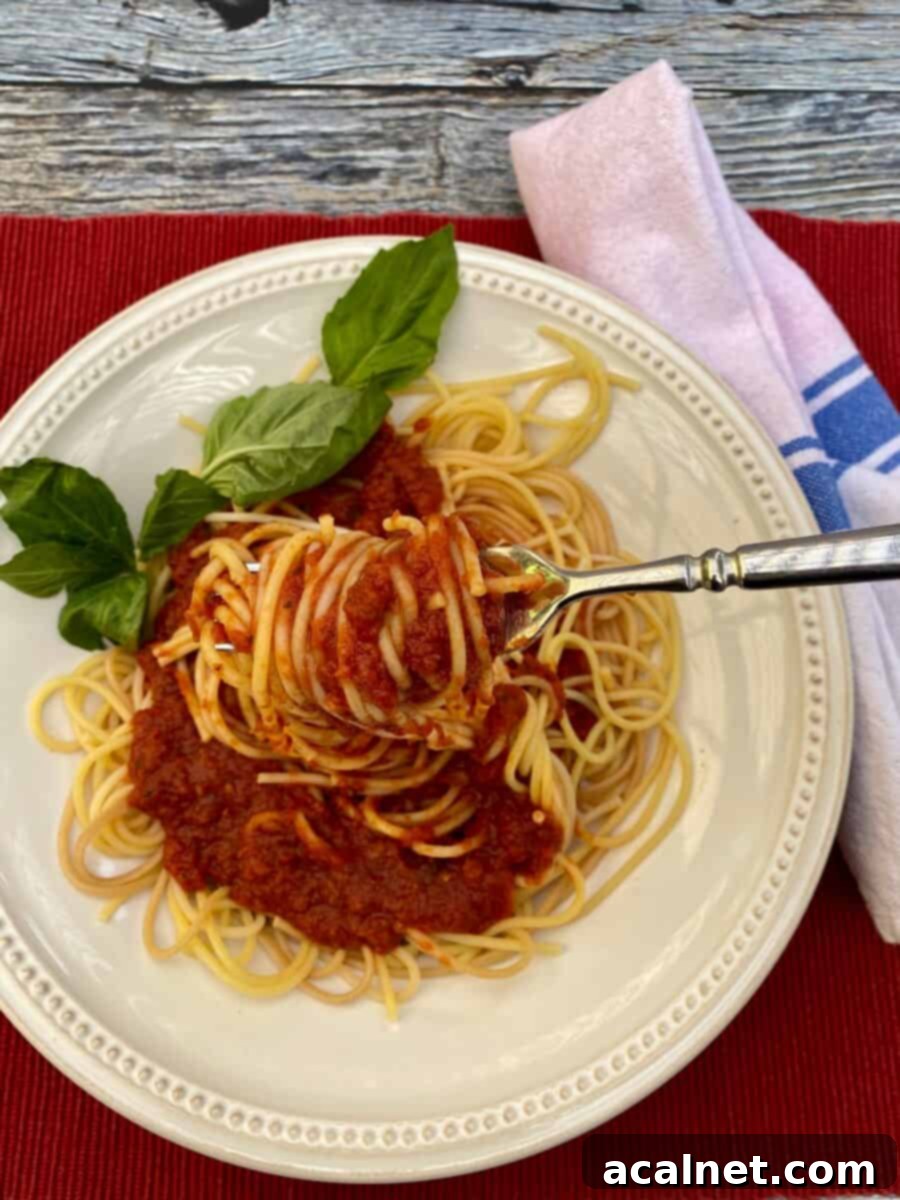
Perfect Pairings for Your Homemade Sunday Gravy
A glorious batch of homemade Sunday Gravy deserves to be enjoyed with equally delightful accompaniments. Whether you’re planning a full Italian-American feast or a simple family dinner, these pairings will elevate your meal and perfectly complement the rich, slow-cooked spaghetti sauce and pasta:
- **Balsamic Brussels Sprouts:** The slight bitterness and tangy sweetness of perfectly roasted or sautéed Brussels sprouts, especially with a balsamic glaze, provide a wonderful and refreshing contrast to the rich tomato gravy, cutting through its heartiness beautifully.
- **Crisp Green Salad with Blue Cheese Vinaigrette:** A light, crisp green salad tossed with a sharp and tangy blue cheese vinaigrette offers a delightful palate cleanser. Its freshness and piquant notes help balance the robust flavors of the pasta and gravy, making each bite as enjoyable as the last.
- **Homemade Meatballs:** While the gravy itself is infused with meat flavor from its long simmer, serving it alongside classic homemade meatballs (or even Italian sausage) creates an even more hearty, traditional, and truly satisfying Italian-American feast. It’s the ultimate comfort food combination that never disappoints.
- **Crusty Italian Bread:** Don’t forget a loaf of warm, crusty Italian bread! It’s essential for soaking up every last drop of that magnificent Sunday Gravy.
Sunday Gravy (Spaghetti Sauce) Recipe
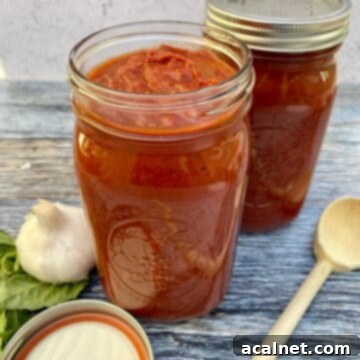
Sunday Gravy (Spaghetti Sauce)
Print
Rate
Pin Recipe
Ingredients
- 2 tablespoons olive oil
- 1 small beef shank – with bone, roughly ¾ lb
- 4-5 cloves garlic – crushed
- 3 28 ounce cans San Marzano crushed tomatoes – or any variety of high quality canned, crushed tomatoes
- ¾ cup water
- ¼ cup red wine – optional
- 1 6 ounce can tomato paste
- 10 fresh basil leaves – torn, about ¼ cup
- 2 tablespoons Italian seasoning
- 2 teaspoons salt
- 2 teaspoons pepper
Instructions
Brown Meat
- Heat the olive oil in a large stockpot or Dutch oven on the stove over medium-high heat until the oil shimmers. Carefully place the beef shank (or your chosen meat cut) in the hot oil. Sprinkle it with a little salt and pepper, and sear to brown thoroughly on all sides. This crucial initial step will take approximately 15 minutes and is essential for developing a rich, savory crust and building a foundational layer of flavor for your gravy. Once browned, add the crushed garlic and cook for another minute or two until the garlic is softened and fragrant, being careful not to let it burn. If there’s any excessive fat rendering from the beef shank, remove the meat from the pan and carefully slice off the excess fat, discarding it or reserving it for other uses before returning the meat to the pot.
Combine Ingredients
- Return the browned beef (if removed) to the pan. Reduce the heat to low. Now, carefully add all of the remaining ingredients: the three 28-ounce cans of San Marzano crushed tomatoes (or your chosen high-quality crushed tomatoes), ¾ cup water, ¼ cup red wine (if you are using it; otherwise, replace with water or broth), the entire 6-ounce can of tomato paste, 10 torn fresh basil leaves, 2 tablespoons Italian seasoning, 2 teaspoons salt, and 2 teaspoons freshly ground black pepper. Stir gently but thoroughly to combine everything, ensuring all ingredients are well incorporated and the beef shank remains in large chunks within the sauce, allowing its flavor to permeate slowly and deeply throughout the gravy.
Simmer and Serve
- Once the Sunday Gravy begins to gently simmer, partially cover the pot with a lid, leaving a small vent for steam to escape. This allows some moisture to evaporate, concentrating the flavors. Reduce the heat to its lowest setting to maintain a very gentle simmer. Allow the gravy to cook for at least 2 hours, though for the best, most profound flavor development and a truly authentic taste, aim for 3-4 hours or even longer. Stir occasionally (every 30-45 minutes) to prevent sticking and ensure even cooking and flavor distribution. This extended simmering time is absolutely crucial for the flavors to truly meld, deepen, and for the meat to tenderize, transforming the sauce into a rich, complex gravy.
- Carefully remove the bone and any visible large chunks of meat from the finished sauce. At this point, you can discard the bone, and if you wish, shred the tender cooked meat (it should be falling off the bone) to serve on the side as a delicious accompaniment to your pasta, or chop it finely and return it to the sauce for a heartier gravy. Stir the sauce, and if you find it has reduced too much or is too thick for your preference, add a little water (or broth) at a time until you reach your desired consistency. Serve your magnificent homemade Sunday Gravy generously over your favorite pasta – spaghetti, rigatoni, or ziti are all excellent choices for holding this rich sauce – or use it as the flavorful foundation for layering a rich lasagna, making chicken or eggplant parmesan, or creating delicious, comforting subs.
Notes
Calories: 49kcal
Carbohydrates: 2g
Protein: 2g
Fat: 3g
Saturated Fat: 1g
Polyunsaturated Fat: 1g
Monounsaturated Fat: 2g
Cholesterol: 4mg
Sodium: 474mg
Potassium: 73mg
Fiber: 1g
Sugar: 1g
Vitamin A: 43IU
Vitamin C: 1mg
Calcium: 24mg
Iron: 1mg
Please note, the nutrition details are estimated using a food database, so they’re just a rough estimate not an exact science.
